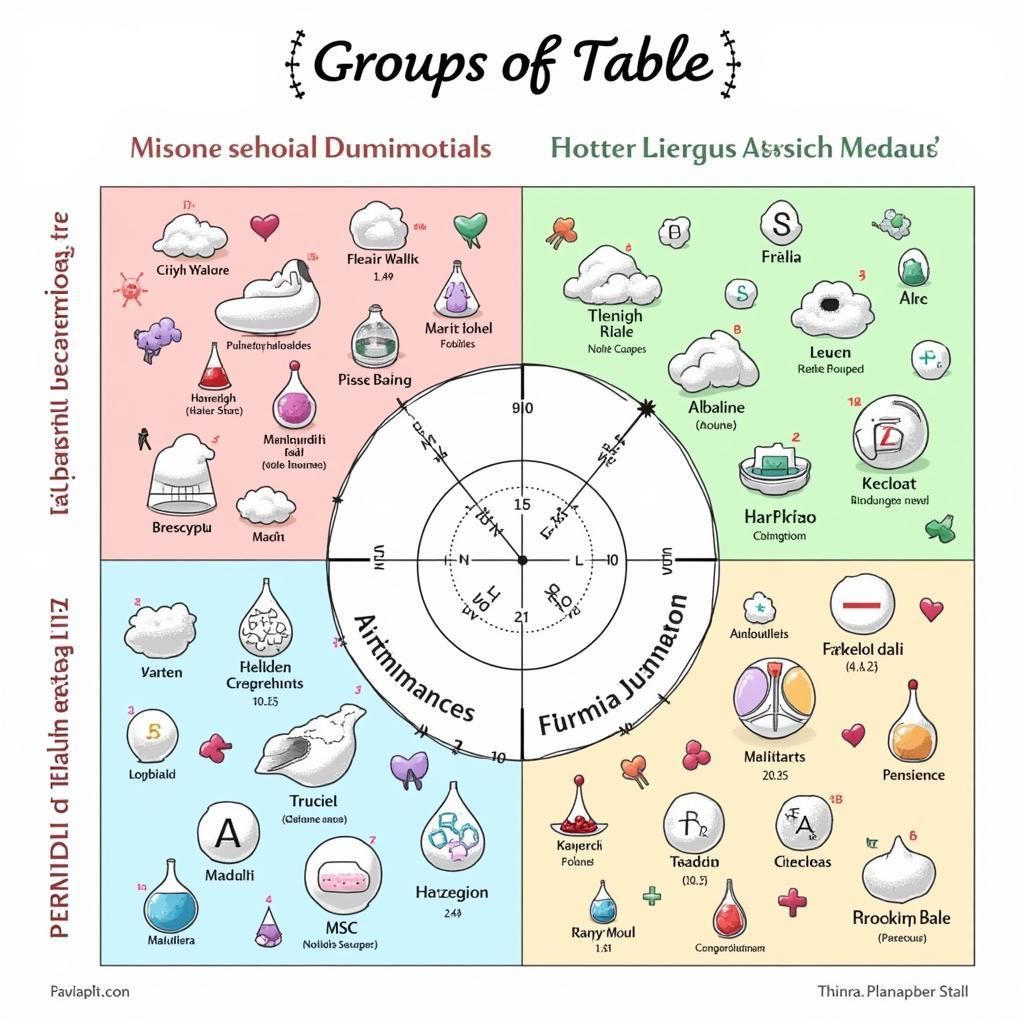The periodic table of elements can seem like a daunting code to crack, especially when you’re trying to learn all 118 chemical elements – in English! Don’t worry, we’ve got you covered. This guide will break down the essentials of the periodic table, equipping you with the knowledge to confidently navigate the world of elements and impress your science teachers.
Deciphering the Periodic Table: A Beginner’s Guide
The periodic table is more than just a chart; it’s a meticulously organized system that reveals the hidden relationships between elements based on their atomic structure and properties. Understanding this system is key to unlocking the secrets of chemistry.
What Does the Periodic Table Tell Us?
Each element on the periodic table is represented by a unique symbol (usually one or two letters), like H for Hydrogen or Au for Gold. But there’s much more to it than just names and symbols. Each element box also includes:
- Atomic Number: This number, found at the top of the box, indicates the number of protons in an atom of that element, which defines its identity.
- Atomic Mass: This number, usually found below the element symbol, represents the average mass of an atom of the element.
Navigating the Rows and Columns
The periodic table is arranged in rows called periods and columns called groups.
- Periods: Elements in the same period have the same number of electron shells, which are energy levels where electrons are found. As you move across a period, the atomic number and atomic mass increase.
- Groups: Elements in the same group share similar chemical properties because they have the same number of valence electrons—the electrons in the outermost shell that participate in chemical bonding.
Key Element Groups and Their Characteristics
While memorizing every single element is impressive, understanding the trends and characteristics of different element groups is far more valuable. Let’s delve into some important groups:
Alkali Metals (Group 1): The Reactive Ones
This group, excluding Hydrogen, consists of highly reactive metals like Lithium (Li), Sodium (Na), and Potassium (K). They have one valence electron, making them eager to lose it to form positive ions.
Alkaline Earth Metals (Group 2): The Sturdy Ones
Elements in this group, such as Magnesium (Mg) and Calcium (Ca), are less reactive than alkali metals but still quite reactive. They have two valence electrons.
Halogens (Group 17): The Versatile Ones
This group includes highly reactive nonmetals like Fluorine (F), Chlorine (Cl), and Bromine (Br). With seven valence electrons, they readily gain an electron to form negative ions.
Noble Gases (Group 18): The Stable Ones
This group, including Helium (He), Neon (Ne), and Argon (Ar), consists of unreactive, or inert, gases. They have a full outer shell of valence electrons, making them very stable.
 Major Groups of the Periodic Table
Major Groups of the Periodic Table
Why Learning the Periodic Table in English Matters
As science becomes increasingly globalized, understanding scientific terminology in English is essential. Here’s why mastering the periodic table in English is beneficial:
- Global Communication: English is the language of science, allowing you to communicate with scientists and researchers worldwide.
- Access to Information: A vast amount of scientific literature, research articles, and educational resources are available in English.
- Career Advancement: Proficiency in English and scientific knowledge can open doors to exciting career opportunities in STEM fields.
Beyond Memorization: Making the Periodic Table Stick
Memorizing the periodic table is a good start, but true understanding comes from applying this knowledge. Here are some tips:
- Focus on Trends: Instead of rote memorization, focus on understanding the periodic trends in properties like atomic radius, ionization energy, and electronegativity.
- Visualize and Connect: Use visual aids, mnemonics, or even create your own stories to connect with the elements and their characteristics.
- Practice Makes Perfect: Regularly test your knowledge through quizzes, games, or by trying to predict element properties based on their position on the table.
Conclusion
The periodic table is a fundamental tool for anyone interested in the fascinating world of chemistry. By learning the elements and their properties in English, you’re not just memorizing facts; you’re gaining a deeper understanding of the building blocks of matter and opening doors to a universe of scientific exploration.


